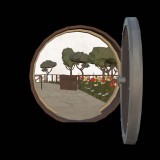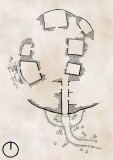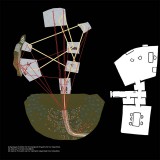Supervisor:
2023
The first volume of "The Lord of the Rings" trilogy, entitled "The Fellowship of the Ring" by J.R.R. Tolkien formed the background that marked significant changes in the formation of both the style and the usual patterns of the works of fantasy literature that followed. The spatial descriptions of both natural landscapes and architectural structures, apart from serving the purposes of storytelling, the development of the myth and the plot of the events, constitute a veritable scene of action, the "architect" of which is, of course, the author himself.
“There and Back Again” falls under the category of “Walking Simulator” games and focuses on the virtual walking experience as a means of telling the story. It becomes clear that the visitor interacts and therefore understands the "world", the setting of the action, experiences the effectiveness of walking through the space, of which he is also a member and part. In order to achieve the best possible result, an attempt was made to create a navigation system that will allow the participant to navigate both the 3D space and the "map", prompting him to continuously switch between these two spatial expressions. Its purpose is to overcome the obstacles of one spatial level by resorting to a secondary one.
Design-wise, both minimalism and modernism are avoided, in order to visually separate the game world from the real world. All details are captured according to the author’s instructions, which reflect a pervasive sense of nostalgia. The spaces that Tolkien himself "illuminates" and that contribute to the development of the plot are faithfully conveyed. The importance of the spaces is translated through the different levels of detail in the design. Finally, the game experience is completed by the recorded narration of the three chapters used to create it, giving the opportunity to directly compare the experience offered by the two narrative media, and the other graphic elements that reflect the nostalgic mood of the fairy tales.







